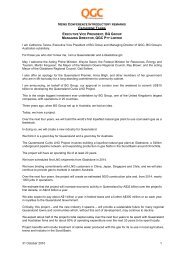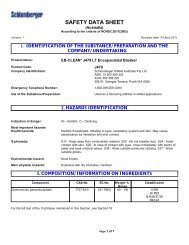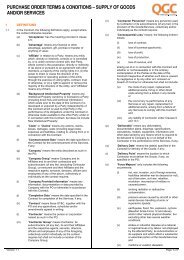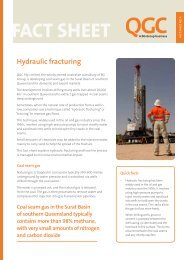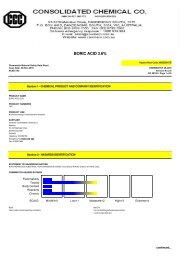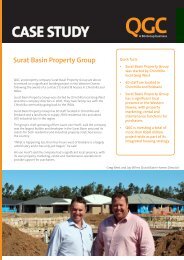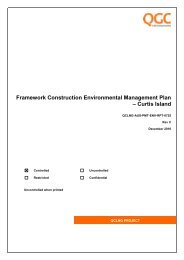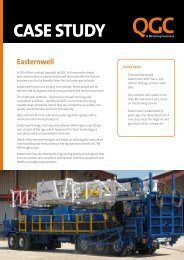Pest and Weed Management Plan - QGC
Pest and Weed Management Plan - QGC
Pest and Weed Management Plan - QGC
Create successful ePaper yourself
Turn your PDF publications into a flip-book with our unique Google optimized e-Paper software.
<strong>Pest</strong> <strong>and</strong> <strong>Weed</strong> <strong>Management</strong> <strong>Plan</strong>Rev 0May 20113.5.2 Harrisia speciesPlate 3: Harrisia Cactuswww.dpi.qld.gov.au/4790_7297.htmPlate 4: Harrisia Cactus Fruitwww.dpi.qld.gov.au/4790_7297.htmHarrisia cactus species (Harrisia spp.); Class 2 Declared weed species; Common to abundant in central <strong>and</strong> southern Queensl<strong>and</strong> after introduction from South America; Shade tolerant <strong>and</strong> well adapted to infest brigalow <strong>and</strong> associated softwood areas; Characterised by their fleshy jointed stems forming a half a metre high tangle of spiky cactus; Each stem section of the mat-like plant can root <strong>and</strong> form a deep, underground tuberous rootsystem that can survive the death of the above ground parts; Propagation occurs from seed contained in round red fruits <strong>and</strong> regrowth of stem segments <strong>and</strong>underground tubers; Harrisia cactus is found occasionally in localised areas over parts of the gas field tenements; Refer to DEEDI Harrisia Cactus fact sheet for control methods (Declared <strong>Plan</strong>ts of Queensl<strong>and</strong>,http://www.dpi.qld.gov.au/4790_7005.htm); Harrisia cactus distribution map produced by Biosecurity Queensl<strong>and</strong>, is provided inAppendix 7; <strong>QGC</strong> Gas Field distribution maps will be produced as field distribution data is continually collated<strong>and</strong> updated.25 of 100



